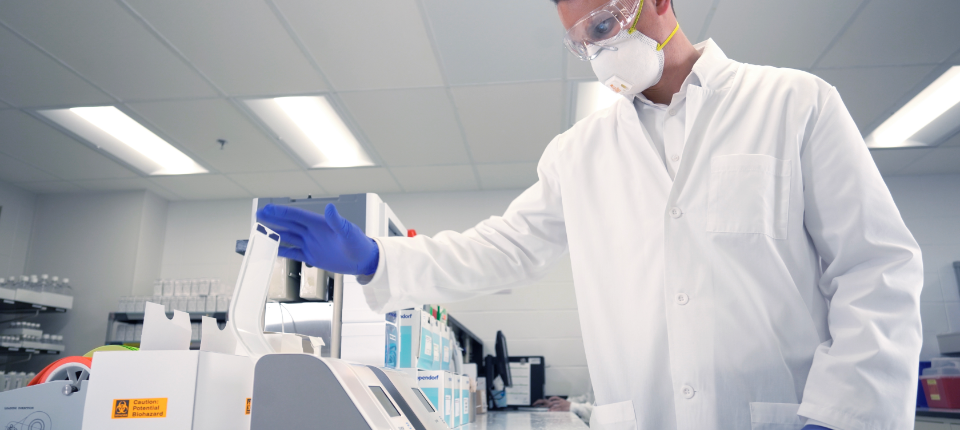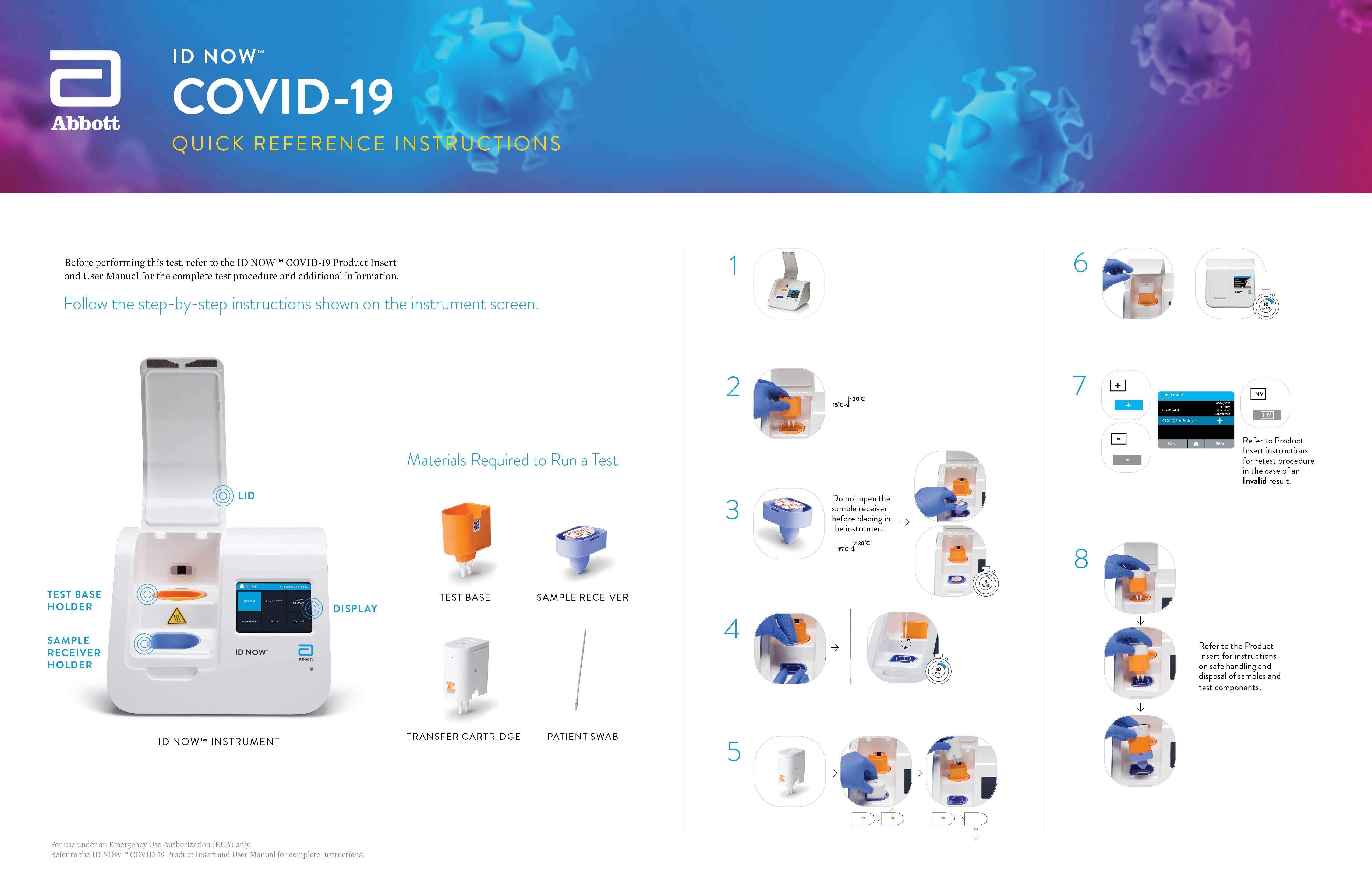
Steps to Use ID NOW Effectively
An Abbott infectious disease expert shares steps for effectively running COVID-19 tests on ID NOW.
May 04, 2020
- Copy Link
- Share on X
- Share on Facebook
- Share on Linkedin
Testing for COVID-19 is happening across the U.S. With our ID NOW instruments deployed to hotspots around the country, healthcare providers can test patients suspected of the virus with results in 13 minutes or less.
While ID NOW has historically been used in urgent care centers, emergency rooms and physicians' offices for testing patients suspected of the flu or other respiratory viruses, the instrument is now being used to test for COVID-19 in non-traditional testing sites – and the tests are being administered by people who may be new to point-of-care tests.
Norman Moore, Ph.D. is an infectious disease expert and has worked in our Rapid Diagnostics business for 25 years. Moore and our team of researchers and scientists are responsible for developing high quality molecular tests on the ID NOW instrument.
We've asked him to share some of the important steps to effectively run COVID-19 tests with ID NOW.
1. Healthcare Professionals Who Have Been Trained on ID NOW Should Operate the Instrument and Tests
It's important that a qualified healthcare worker — one who is trained in collecting and processing samples, and on how to operate ID NOW — run the test. It's also important that trained healthcare workers wear the proper personal protective equipment (PPE) and understand methods of taking swabs using sterile techniques and processing and handling of test samples.
Because the coronavirus is so new, we also want healthcare professionals to feel confident when using our ID NOW instrument. That's why we recently conducted a biosafety test to ensure that the Abbott ID NOW™ instrument can be used in point-of-care environments by trained personnel.
The results from our biosafety study found that when the swab is inserted into the sample receiver, the virus was not detected anywhere on the ID NOW instrument itself or the operator's gloved hand. This means that when the test is performed as intended, it does not generate "droplets" or create "splashes" that could contaminate the instrument and inadvertently come into contact with the operator.
2. Collecting and Storing Samples
Proper sample collection and processing must be used with any infectious disease test. Clinical samples can be collected by healthcare professionals in a variety of settings. These samples can be taken as a throat, nasal or nasopharyngeal swab. Once the swab is collected, it should be tested immediately. If that is not possible, it can be held for two hours at room temperature prior to testing or 24 hours if kept at 2⁰-8⁰C (35.6⁰-46.4⁰F). Samples put in transport medium (VTM) should not be used with ID NOW for COVID-19.
3. Testing Samples on ID NOW
ID NOW uses a liquid solution designed to deactivate the virus and break it apart to expose the RNA. The instrument then amplifies the virus hundreds of millions of times to make it more easily detectable and determine at a molecular level whether the sample is positive or negative. For this reaction to occur, a lab technician swirls the swab in the solution that is in a sample receiver for approximately 10 seconds. The liquid solution — which is acidic and includes a detergent — is heated to 56⁰C (132.8⁰F). The reservoir is filled with a small amount of liquid — enough to make this reaction happen, without generating a "splash" while mixing.

The ID NOW COVID-19 EUA has not been FDA cleared or approved. It has been authorized by the FDA under an emergency use authorization for use by authorized laboratories and patient care settings. The test has been authorized only for the detection of nucleic acid from SARS-CoV-2, not for any other viruses or pathogens, and is only authorized for the duration of the declaration that circumstances exist justifying the authorization of emergency use of in vitro diagnostic tests for detection and/or diagnosis of COVID-19 under Section 564(b)(1) of the Act, 21 U.S.C. § 360bbb-3(b)(1), unless the authorization is terminated or revoked sooner.
For the latest on Abbott’s life-changing technology, get updates directly in your inbox.